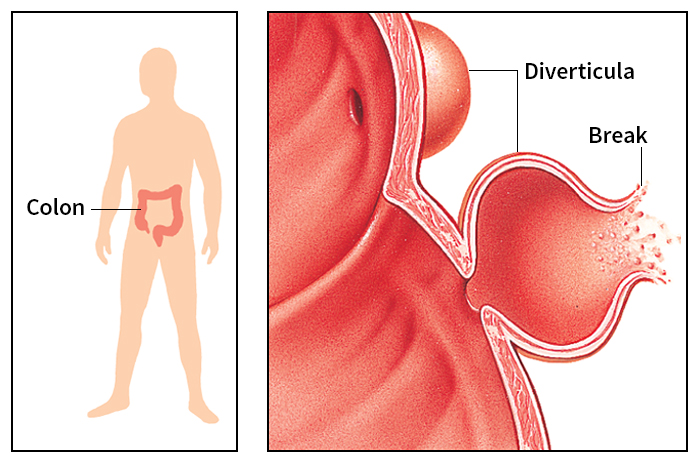Diverticulitis, << `dy` vuhr `tihk` yuh LY tihs, >> is a common disease of the colon (part of the large intestine). Its symptoms include pain in the lower left part of the abdomen and a fever. The disease develops from diverticulosis, a disorder widespread among middle-aged and elderly people in North America and northern Europe.
Diverticulosis involves the presence of pouches called diverticula along the outside of the colon. Diverticula rarely form in people under the age of 30. Most diverticulosis patients have no symptoms.

Evidence suggests that a diet high in fiber can help prevent diverticulosis. Good sources of fiber include beans, fruits, leafy vegetables, and nuts. A shortage of fiber in the diet makes the waste material in the colon extremely firm and compact. The waste cannot move easily through the colon, and high pressure results. This pressure can force the inner membrane of the colon to bulge out through weak points in the lining of the organ. Such action forms small, permanent diverticula that may be seen with an X-ray examination.
In the United States, the diets of most people are relatively low in fiber. Nearly half of those over 60 have diverticulosis. The condition rarely occurs in less developed nations, where the standard diet is high in fiber.
Diverticulitis develops in many cases of diverticulosis. It results when one or more of the diverticula are inflamed. The inflamed diverticula may break open. The material that leaks out infects the outer surface of the colon. In most cases, the infection stays in a small area. But it may spread and develop into peritonitis, a severe illness that can cause death (see Peritonitis).
Doctors treat diverticulitis with antibiotics to control infection, drugs to relax the muscle of the colon, and compounds to help empty the colon. In severe cases, surgeons may remove the inflamed part of the colon. A diet high in fiber may help prevent a recurrence of the disease.
